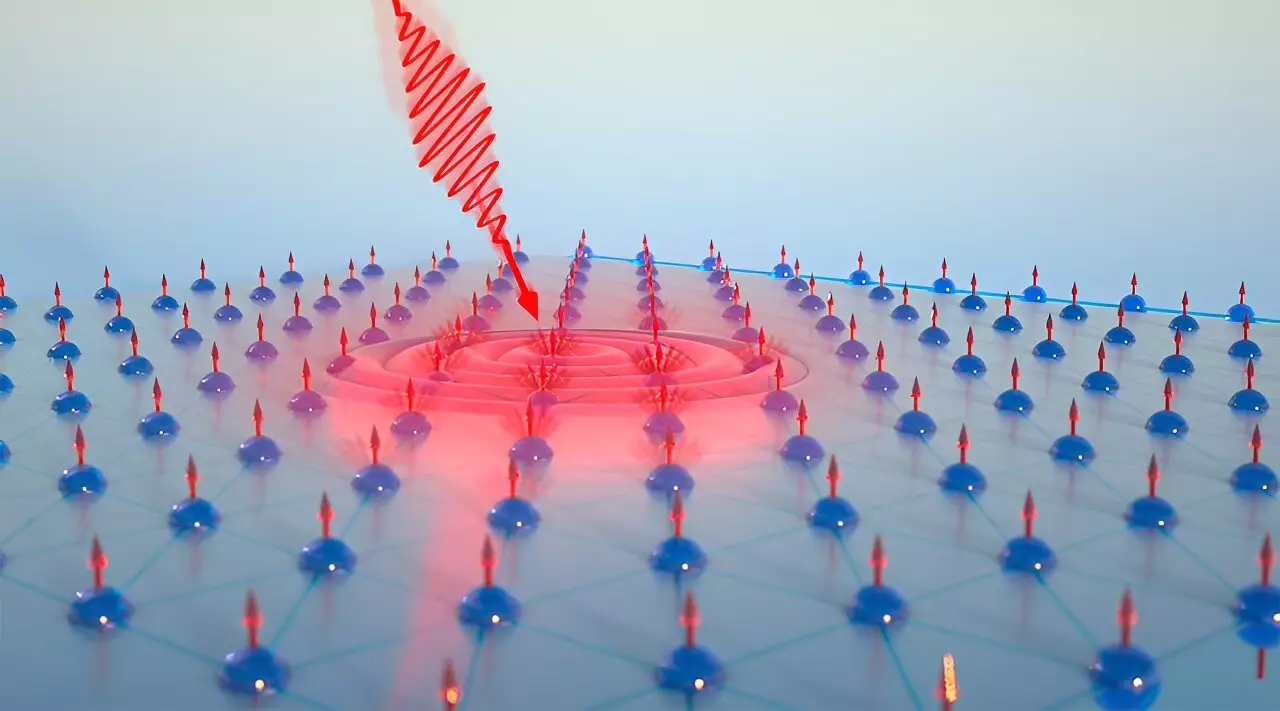In the rapidly evolving landscape of data storage and computational efficiency, researchers are continuously seeking innovative materials that can contribute to the development of next-generation optical memory systems. Traditional electronic memory devices currently dominate the market; however, they often come with considerable limitations regarding speed and energy consumption. The ongoing search for alternatives has led scientists to explore the intricate properties of complex materials. Notably, a recent discovery at the University of Chicago Pritzker School of Molecular Engineering highlights the potential of a unique material, manganese bismuth telluride (MnBi2Te4), which exhibits promising characteristics for optical memory applications.
The research team, led by assistant professor Shuolong Yang, embarked on this exploration not with the initial intention of developing new memory technologies, but rather to deepen their understanding of the molecular functionality of MnBi2Te4. Unexpectedly, their work revealed that this material possesses rapid and easily modifiable magnetic properties in response to light stimuli. The implications of this finding suggest that a laser could feasibly be employed to write and read data by manipulating the magnetic states of the material.
Such capability is not merely a laboratory curiosity; it represents a fundamental shift in engineering perspectives, wherein basic scientific inquiry stimulates innovative applications. Yang eloquently summarizes this philosophy, suggesting that practical applications arise directly from a robust understanding of fundamental properties.
A crucial aspect of MnBi2Te4’s behavior lies in the competition between its electronic states. On one side, the material demonstrates a topological state that is adept at transmitting quantum information. Conversely, its light-sensitive states lend themselves well to optical storage, creating a complex scenario for researchers. Historically, MnBi2Te4 has attracted attention in the context of magnetic topological insulators (MTIs), which conduct electricity along their surfaces while insulating in the bulk. The challenge, however, has been the material’s experimental handling and the observation of its predicted topological properties.
Yang and his team sought to understand what impeded this process and utilized state-of-the-art spectroscopy methodologies that allowed them to visualize electron behavior in real time. Employing time-resolved photoemission techniques alongside magneto-optical Kerr effect measurements provided insights into the contradictory behaviors observed in MnBi2Te4. Through this multifaceted approach, the researchers uncovered a competing quasi-2D electronic state that significantly affects the material’s functionality.
The quasi-2D electronic state presents a paradox — while it does not harness the ideal characteristics for quantum data transfer, it reveals a fascinating property that could enhance optical memory functionalities. The strong coupling between magnetism and light paves the way for experiments using lasers to manipulate MnBi2Te4’s properties, thereby enabling rapid and energy-efficient data storage similar to what is seen in contemporary electronic memory devices. This possibility is particularly significant given the urgent demand for faster and more accessible data processing systems in both consumer and enterprise technologies.
As the researchers delve deeper into understanding the balance between the different electron states, they aim to fine-tune the conditions for enhancing the material’s characteristics as an MTI while simultaneously optimizing its efficiency as an optical memory. Yang’s research opens the door to the prospect of utilizing MnBi2Te4 for innovative applications that could revolutionize the realms of data storage, computation, and beyond.
The venture into the properties of MnBi2Te4 serves as a compelling example of how serendipitous discoveries in basic research can lead to groundbreaking advancements in technology. As the team forges ahead with their studies, the balance between traditional quantum data storage capabilities and novel optical memory applications will likely shape the contours of future technologies. With potential efficiencies surpassing established electronic memory methods, MnBi2Te4 stands as a beacon of hope and innovation, promising a paradigm shift in the quest for advanced and efficient data storage solutions.

